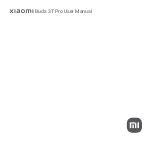
2
(D) TEST RESULTS AND TECHNICAL DATA
(C) OPERATING THE HEADSET - HEADSET CONTROLS
Dose Button
C2
Power Indicator
C4
Dose Indicator
C3
Power Button
C1
Hear-Through Dial
C5
Multi-Function Button
C6
Volume Button Up
Volume Button Down
C7
USB-C & Charging Indicator
C8
C10
Pairing Indicator
C9
Microphone for voice calls
C11
OVERVIEW
C1
C2
C4
C3
C5
C10
C6
C9
C8
C7
C11
Frequency, Hz *D1
125 250 500 1000 2000 3150 4000 6300 8000
NRR
x dB
Canada
Class xx
Mean Attenuation, dB *D2
x
x
xx
x
x
x
x
x
x
Standard Deviation, dB *D3
x
x
x
x
x
x
x
x
x
TESTED ACCORDING TO ANSI S3.19-1974
Verishield is tested and approved in accordance with ANSI S3.19-1974 Standard at Michael &
Associates Inc., USA. Verishield Attenuation Data according to American National Standards
Institute Specifications ANSI S3.19-1974 (in passive mode, electronics switched off)
The level of noise entering a person’s ear, when hearing protection is worn as directed, is closely
approximated by the difference between the A-weighted environmental level and the NRR.
EXAMPLE:
1.
The environmental noise level at the ear is
xx
dB (A).
2.
The NRR is
xx
decibels (dB).
3.
The level of noise entering the ear is approximately equal to
xx
dB (A).
CAUTION:
For noise environments dominated by frequencies below 500 Hz, the C-weighted
environmental noise level should be used. Improper fit of this device will reduce its effectiveness
in attenuating noise. Although hearing protectors can be recommended for protection against the
harmful effects of impulse noise, the Noise Reduction Rating (NRR) is based on the attenuation
of continuous noise and may not be an accurate indicator of the protection attainable against
impulse noise, such as gunfire. Constant or repetitive exposure to impulsive noise may lead to
serious injury, including temporary or permanent deafness. The Noise Reduction Rating (NRR)
calculated from the attenuation data is xx dB. Earmuffs must be properly fitted to attenuate noise
effectively. Refer to instructions.
NOTE:
The Noise Reduction Rating is derived from testing procedures at an independent
laboratory and in accordance to acceptable A.N.S.I. standards. Actual noise reduction can vary
from laboratory results as labelled. Protection is maximized when: proper protector is selected for
application, a good training program is utilized and proper fitting techniques are followed.




























